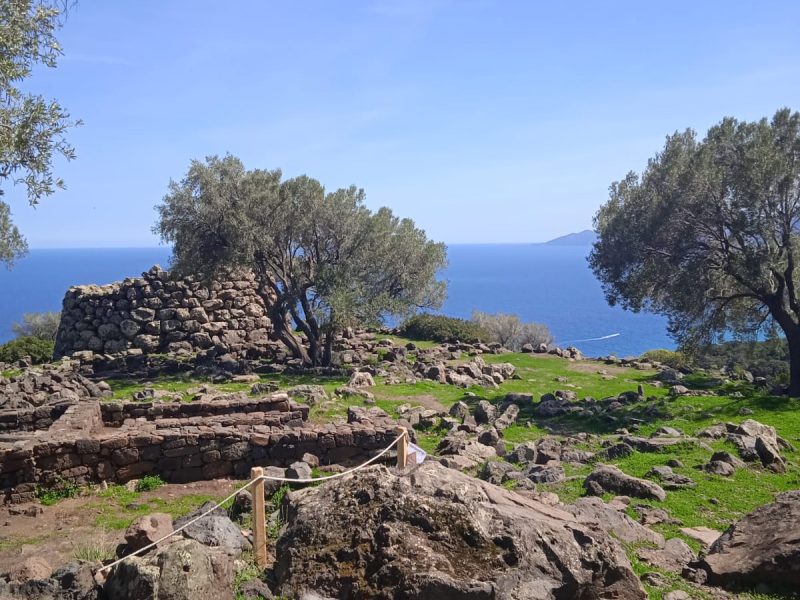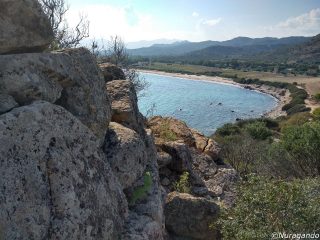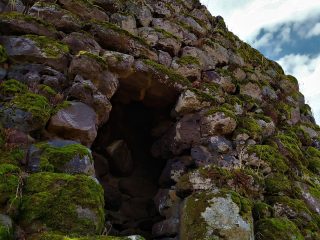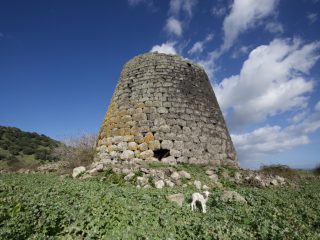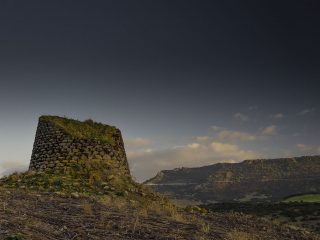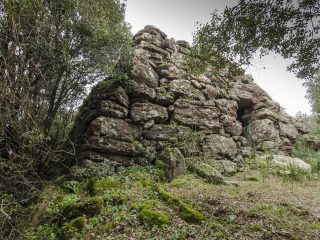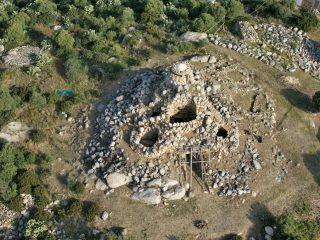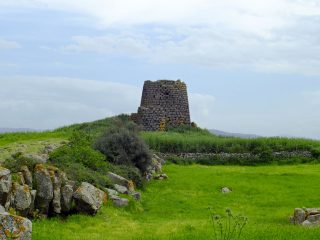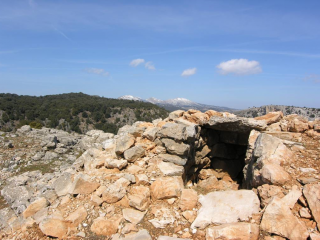The Mannu Nuraghe is an extensive complex with a clear view stretching across 40 kilometres of the Golfo Di Osorei.
It stands on a plateau of volcanic origin, 20 metres above sea level. The context dominates the entire Gulf and the Codula di Fuili, a small canyon which emerges onto the beach of the same name. A strategic position for the safety of the settlement rich in natural barriers and very useful for defending the town.
The complex consists of a simple Nuraghe surrounded by a Nuragic and Roman settlement, with dozens of huts, stretching for more than two hectares.
The tower is a simple tholos construction built with large, polyhedric basalt masses arranged in uneven rows. 3.50 m of the monument has been preserved on the east side and 4.70 m on the northern side; it has a ground level of 12.80 m and sticks out by 11.20 m.
The east-facing entrance, towards the sea, has a trapezoidal shape and is supported by an uneven architrave.
In order to reach the internal chamber, follow the trapezoidal corridor off of which, on the left, opens out the stairwell with twelve surviving steps of the original staircase in the corridor.
The room has an uneven elliptical layout with two raised niches carved out of the wall.
The excavation of the Nuraghe room revealed a large number of ceramic items from the Nuragic era. They refer to periods spanning from the Middle Bronze Age to the Iron Age (XV-IX centuries B.C.), including saucepans, ollas, flat-bottom cups and numerous clay whorls.


